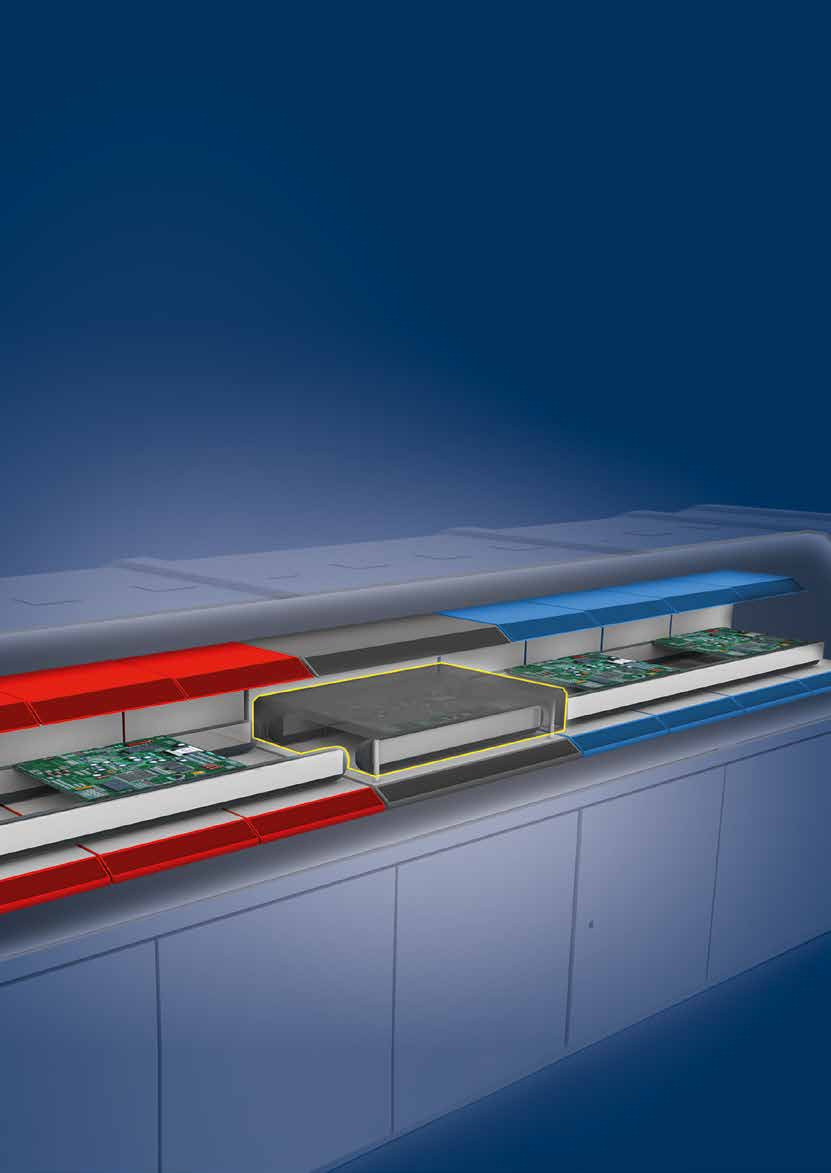How long is the circuit board reflow soldering time
Release time:2024-01-19Publisher:Jeenoce
How long is the welding time of the circuit board from entering the reflow furnace to coming out of the reflow furnace? This depends on the length of the reflow furnace you use, the length of the circuit board, etc., and also depends on the quality of your reflow furnace. You can't give this a definite value. However, there is a formula for calculating the reflow soldering time of this circuit board:
Reflow time =(length of PCB panel + distance between boards)/ speed of reflow furnace chain + time wasted in the operation of the circuit board. This is how long to get an accurate reflow time. In addition, reflow has four temperature zones, JEENOCE Electronics (JEENOCE) from the four temperature zones to roughly talk about how long the circuit board reflow time is.

Preheating zone: The purpose is to heat the PCB board to achieve the preheating effect, so that it can be fused with the solder paste. However, at this time, it is necessary to control the heating rate and control it within the appropriate range to avoid thermal shock, causing damage to the circuit board and components. The heating slope of the preheating zone should be less than 3C/sec, and the set temperature should be at room temperature ~130℃. Its residence time is calculated as follows: if the ambient temperature is 25℃, if the heating rate is calculated at 3C/sec, (150-25)/3 is 42s, if the heating rate is calculated at 1.5C/s, then (150-25)/1.5 is 85s. The time is usually adjusted according to the degree of component size difference to regulate the heating rate below 2℃/s.
Constant temperature area: The main purpose is to make the temperature of the components on the PCB board stable and minimize the temperature difference. We hope that the temperature balance of the large and small components can be achieved in this area, and ensure that the flux in the solder paste is fully volatilized. It is worth noting that in this interval, the components on the board should have the same temperature to ensure that there will be no poor welding and other phenomena when it enters the reflux section. The set temperature of the constant temperature zone is 130C~160℃, and the constant temperature time is 60~120s.
Return zone: The temperature in this zone is the highest, allowing the temperature of the component to rise to the peak temperature. In reflow welding, the peak welding temperature varies depending on the solder paste used. Generally, we recommend using the melting point temperature of the solder paste temperature plus 20~40℃. The peak temperature is 210℃~230℃, and the time should not be too long to prevent adverse effects on the PCB board. The heating rate of the reflux area is controlled at 2.5-3℃/s, and the peak temperature should generally be reached within 25s-30s. There is a trick here that the melting tin temperature is above 183 ° C, and the melting tin time can be divided into two, one is 60 to 90s above 183 ° C, and the other is 20 to 60s above 200 ° C, and the peak temperature is 210C to 230 ° C.
Cooling zone: The lead tin powder in the solder paste in this zone has melted and fully wetted the surface to be connected, and should be cooled as quickly as possible, which helps to get bright solder joints and have a good shape, and will not produce rough solder joints. The cooling rate of the cooling section is generally 3~4C/s, and the cooling slope is less than 4C/s.
Of course, in large-scale production, the actual working curve of each product should be adjusted repeatedly according to the SMA size, the number of components and varieties, from the time point of view, the entire reflux time is 175sec-295sec, that is, about 3 minutes to 5 minutes, (excluding the time before entering the warm zone). If you ask the circuit board reflow soldering reflux area welding time should be as short as possible to ensure that the components are well welded, generally 30-60 seconds.

